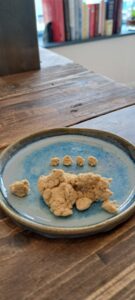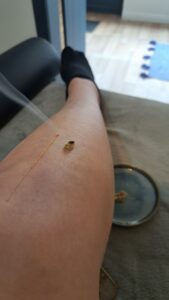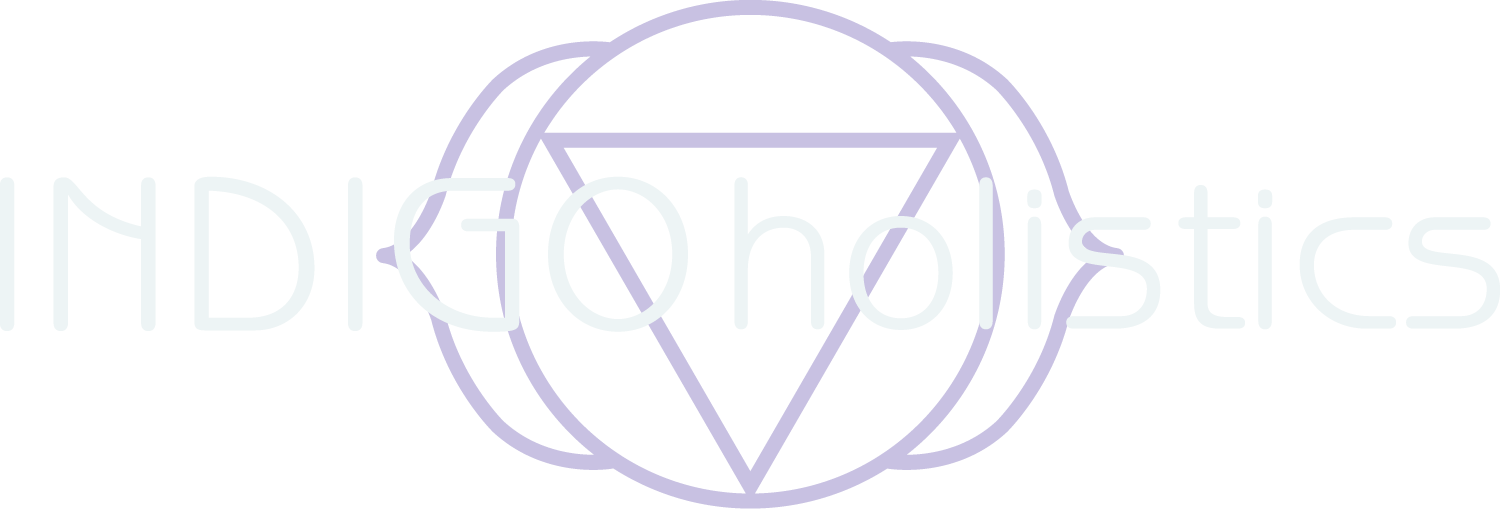Moxibustion (or moxa) is a technique that has been used in eastern traditional medicine for over 2,000 years. Moxibustion can be used as a standalone treatment, although it is most frequently used alongside acupuncture.
The practise of moxibustion involves placing small cones of dried mugwort directly on to acupuncture points around the body. The cones are lit and retained on the patient’s skin until they start to feel heat activating the acupuncture point. With direct moxa, several moxa cones will often be used to warm a point before it is needled.

A moxa stick can also be used during acupuncture treatments, which applies heat to an area of the body. This technique is often used to treat muscular pain, menstrual cramps or bowel-related issues.
The practise of moxibustion is well known for benefitting the immune system, as a well improving blood function. Mugwort (artemisia vulgaris) is a plant native to Europe, Asia, and Africa and has been used in traditional medicine practises around the world for centuries.

Image: Mugwort Grimoire Image Copyright ©Vervain & Rue, a division of Verbena Veritas, LLC, all rights reserved. Original copy available at vervainandrue.com
Moxa and Bl67 for breech presentation in pregnancy
Use of a moxa stick on Bladder 67 (an acupuncture point located on the outside of the fifth toe) in order to turn breech presentation babies is also well-documented in the field of acupuncture (Neri et al, 2004). This treatment is found to be most effective between 33 to 35 weeks gestation.
Moxa and St36 for good health and longevity
Stomach 36 ‘Leg Three Miles’ is an acupuncture point on the lower leg associated with immune function and longevity. Maciocia (1989: 388) mentions that moxa was traditionally used on this point every 5 to 7 days (for ten minutes) on people over thirty to prevent disease and strengthen the constitution.

Moxa Research
Studies have also demonstrated the use of moxa on Stomach 36 in boosting white blood cell count for chemotherapy patients.
There is also strong evidence regarding the use of moxibusion as a treatment for drug resistant tuberculosis. A British charity called Moxafrica has conducted healthcare projects in Uganda, South Africa and also North Korea in the treatment of TB.
Research carried out by Moxafrica demonstrates the effective use of moxa as a low-tech, safe and affordable method of treating TB.
Contraindications
Moxibustion should not be used in cases of heat stroke, high fever, acute inflammation, and skin conditions such as eczema or dermatitis or if you have mugwort allergy. Additionally, it should not be used on areas with thin or sensitive skin, over blood vessels, or on the abdomen or lower back during pregnancy (AIAM, 2023)
Moxibustion Offerings ~
Moxibustion for well-being – 15 minute session
Moxibustion for breech presentation ~ 30 minute session (plus moxa roll stick and instructions provided for home use).
Please visit the Contact page for prices and booking information.
References
Ibanda et al (2018) Adjunctive moxibustion treatment for tuberculosis: A randomised clinical trial investigating potential efficacy and comparative safety. European Journal of Integrative Medicine. Vol 20: 90-97.
Maciocia (1989) The Foundations of Chinese Medicine. Churchill Livingstone
Neri I, Airola G, Contu G, Allais G, Facchinetti F, Benedetto C. Acupuncture plus moxibustion to resolve breech presentation: a randomized controlled study. J Matern Fetal Neonatal Med. 2004 Apr;15(4):247-52.
Shen Q et al. Clinical Observation of Acupuncture plus Moxibustion for Chemoradiotherapy-induced Leukopenia [J]. Shanghai Journal of Acupuncture and Moxibustion, 2017, 36(4).
Young, M and Craig J (2020) Urgent global action is needed on multi drug-resistant tuberculosis (MDR-TB) – can small cone moxa contribute to a global response? European Journal of Integrative Medicine. Vol 37: 101072
